At first glance, Norwegian Cruise Line’s Pride of America seems like any other large cruise ship. About 920 feet long, she holds roughly 2,200 passengers and has 15 decks. If anything, that’s actually a little small compared to modern ships.
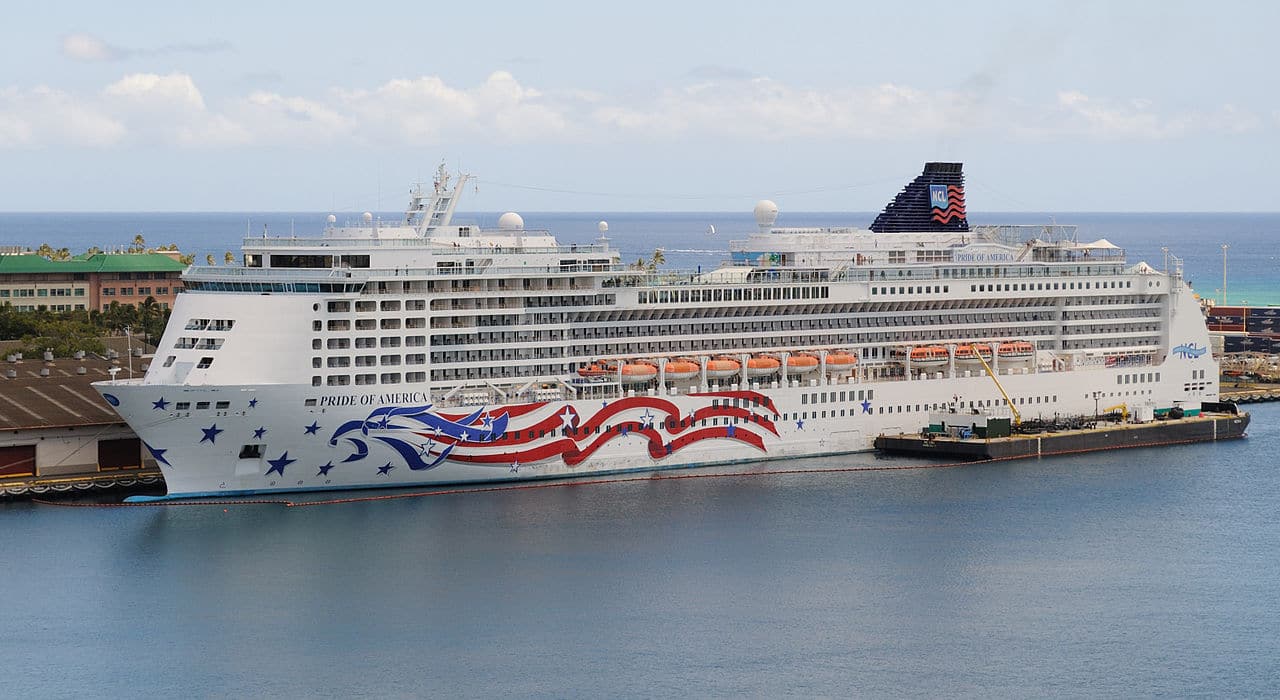
But it’s something that you’re unlikely to realize that makes Pride of America special.
Since the ship is registered in America, she is the only cruise ship from a major line that can legally sail cruises in the United States without having to make a stop in a foreign port. The ship normally sails trips around Hawaii.
As foreign vessels, all the other large cruise ships have to make at least one stop in a foreign port when they leave the United States, or face breaking the law.
If you’ve ever wondered why nearly all cruises have to make a stop in a foreign country on a cruise, you’re not alone. That’s why we dug into the rules surrounding these trips to understand why there’s always at least one international stop on your vacation.
Foreign Vessels Face Special Rules
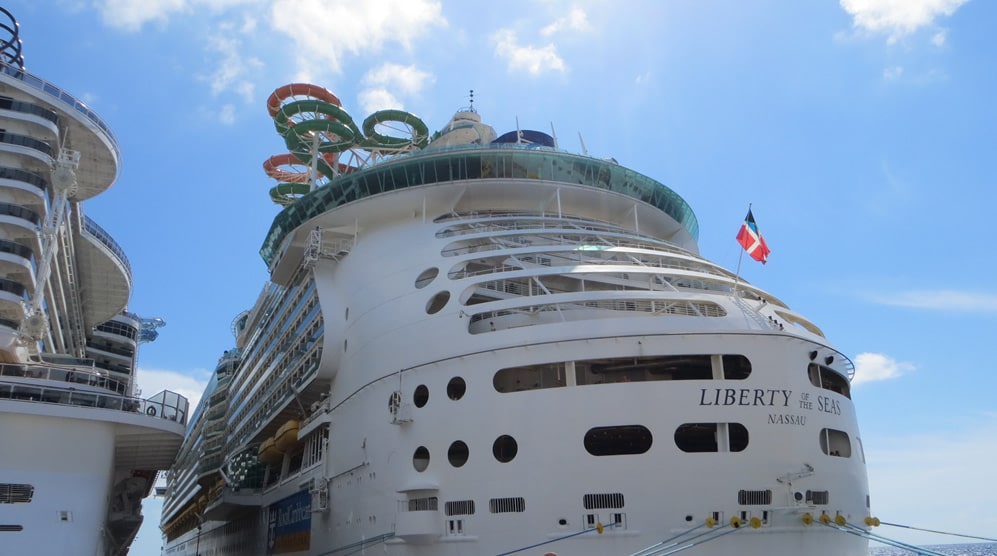
If you’ve taken a cruise, you’ve no doubt headed out to tropical locations like the Bahamas, Mexico, Jamaica, and others. Or if you’ve sailed an Alaskan trip, you’ve enjoyed visiting some of the most awe-inspiring sights in America, but also had a stop in Canada (usually Victoria, British Columbia).
The reason? It comes down to some very specific laws put in place more than 130 years ago regarding how ships can transport passengers around the United States.
You might not realize it, but almost every major cruise ship you sail is actually registered in a foreign country. The “home country” of these ships is normally a place like Panama or the Bahamas. So while the ship may be homeported in Galveston or Miami or New Orleans, it’s actually a foreign vessel.
The reasons behind cruise lines flagging vessels in foreign countries are many. For instance, foreign registry gives them the ability to hire crew from around the world. Ships flagged in the United States must employ Americans.
While there are a number of advantages to cruise lines sailing under foreign flags, there are also disadvantages. Among those is that laws put restrictions of how foreign ships can legally sail with passengers from the United States.
The Passenger Vessel Services Act Says Foreign Ports Are Required
Most people haven’t heard of the Passenger Vessel Services Act, which is also known as the PVSA. This law was first enacted in the 1880s as a way to protect American shipping interests. In effect, it says that ships transporting passengers between U.S. ports need be an American vessel.
Since NCL’s Pride of America is an American-flagged cruise ship, it is able to sail passengers around Hawaii without issue.
However, foreign ships (such as cruise ships) have different rules to follow. They can still carry passengers from American ports, but only if the itinerary meets certain requirements.
Specifically, federal code says the following about moving passengers on a foreign vessel from a U.S. port:
- If a passenger is on a trip only to another U.S. port and leaves the ship (whether temporarily or to disembark), this is a violation of the law.
- If a passenger is on a trip to U.S. ports and a “nearby” foreign port, but disembarks permanently in the U.S. somewhere other than the embarkation port, this is a violation.
- If a passenger is on a trip to U.S. ports and a “distant” foreign port, then the passenger can end the trip at another U.S. port, assuming the passenger visited the foreign port before disembarking.
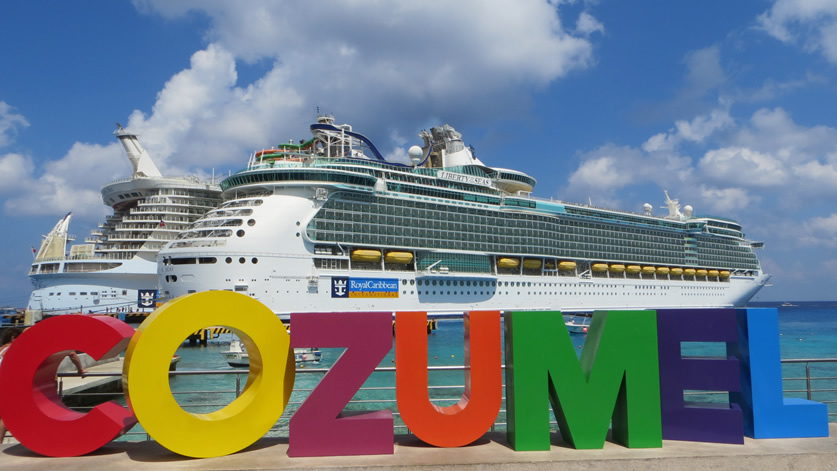
These three interpretations have a big impact on cruise itineraries. Let’s look at each one a little closer.
If a passenger is on a trip only to another U.S. port and leaves the ship (whether temporarily or to disembark), this is a violation of the law.
If you’ve ever wondered why cruise ships always stop in a foreign country during the trip, this rule is the answer. The rule states that if a passenger sailing a foreign vessel is on a trip only to one or more American ports, then it is a violation of the law for them to get off the ship. If passengers will leave the ship at all, the trip must go outside the U.S. to a foreign port.
Say for instance you get on a foreign-flagged cruise ship in Miami and took it to New Orleans before returning to Miami. In this case, no matter if you simply went ashore in New Orleans for the day and disembarked in Miami at the end of the cruise, it still violates the rule. In this case, the cruise line could be fined.
The way to stay within the law is for the trip to include a foreign port. So, for instance, you could sail from Miami, then to New Orleans, and then to Cozumel, before returning back to Miami. In this case, the itinerary doesn’t violate the law.
If a passenger is on a trip to U.S. ports and a “nearby” foreign port, but disembarks permanently in the U.S. somewhere other than the embarkation port, this is a violation.
So what if you were to sail on a cruise from Miami to Cozumel to New Orleans, before returning back to Miami? As covered above, this itinerary would be fine, but the law says a passenger can’t disembark the ship in New Orleans permanently. In this case, passengers must continue on to Miami.
The law makes a distinction between “nearby” ports and “distant” foreign ports. A nearby foreign port is any port in North America, Central America, Bermuda, or the West Indies. A distant foreign port is anything outside of this. The closest distant ports are Aruba, Bonaire, and Curacao.
So cruises to other U.S. ports are fine, as long as passengers visit a nearby foreign port and don’t leave the ship permanently in a different U.S. port.
If a passenger is on a trip to U.S. ports and a “distant” foreign port, then the passenger can end the trip at another U.S. port, assuming the passenger visited the foreign port before disembarking.
Finally, let’s say you sail a journey from Miami to Aruba to New Orleans before returning to Miami. Because Aruba is a distant foreign port, it’s ok if passengers disembark the ship in New Orleans. However, that’s only the case if the passenger first visits Aruba.
If the cruise went from Miami to New Orleans and then to Aruba, then the passenger wouldn’t be able to leave the ship permanently in New Orleans because they hadn’t yet visited the distant foreign port.
What Happens If a Passenger Violates the Law?
To be sure, cruise lines are well aware of the laws surrounding where they can and can’t sail. You won’t find an itinerary that violates the PSVA. That doesn’t keep individual passengers from potentially violating the law, however.
While cruise lines keep tabs on passengers coming and going from the ship, there’s nothing stopping a passenger from leaving the ship and just staying in port. Sometimes it’s even unintentional, such as when a passenger arrives back at the pier after the ship departs, or if there is a medical emergency and a passenger must leave the ship early.
If there is a violation, then the cruise line faces a fine. Right now that fine is roughly $800. Don’t think you’re in the clear, however, since the cruise line is fined and not the passenger.
As Carnival discloses on their website:
“Any guest who, due to emergencies or other unforeseen circumstances, insists on embarking or disembarking the vessel at a different port than planned, which results in a violation of the PVSA, will accept responsibility for any resulting penalties.”
With this law in place and the vast majority of major cruise ships being registered in foreign countries, U.S.-only itineraries aren’t on the table for the big cruise lines. That said, a number of smaller lines focused on river cruising or regional cruises do offer trips focused on the United States.





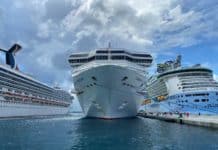






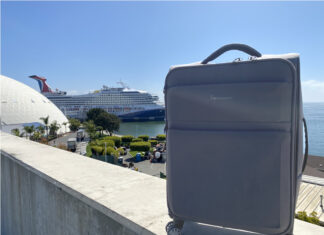
Are there any exceptions to these rules? Private charters perhaps?
If Cruise ships stops at a foreign port, and no one leaves the ship, does this meet the rules of the Jones Act or do passengers have to “visit” that port, meaning a certain % must disembark at the foreign port for a certain amount of time. Since Canada has shut it’s ports and the Alaska season will be closed again, as the ship can’t touch a foreign port (usually Vancouver or Victoria), is there any legal reason why Canada can’t allow the ships to stop in the port, but all passengers & crew must remain on the ship?
I believe there are rules that the stop has to be real; you can’t just dock and then immediately leave. It should be a legitimate stop.